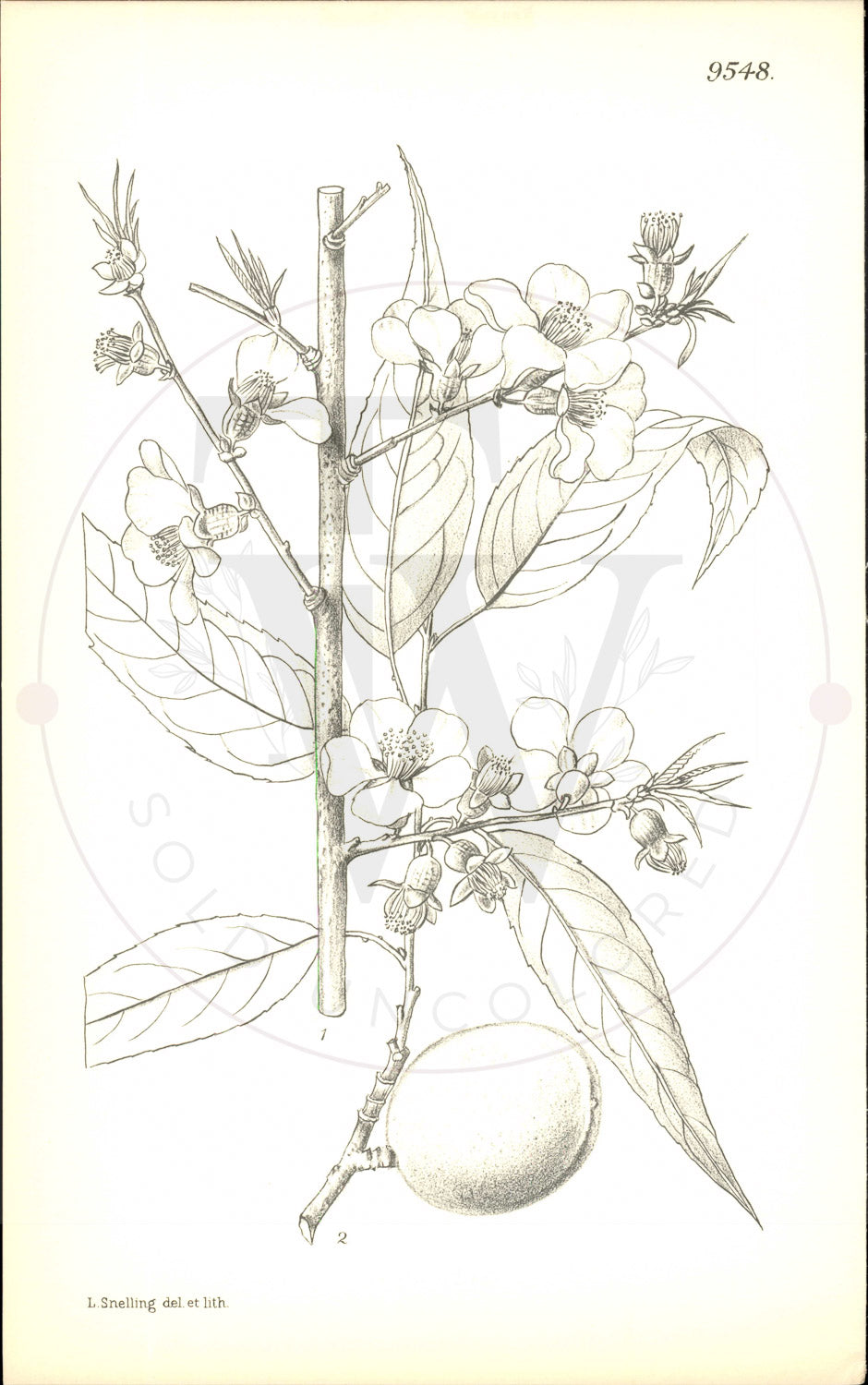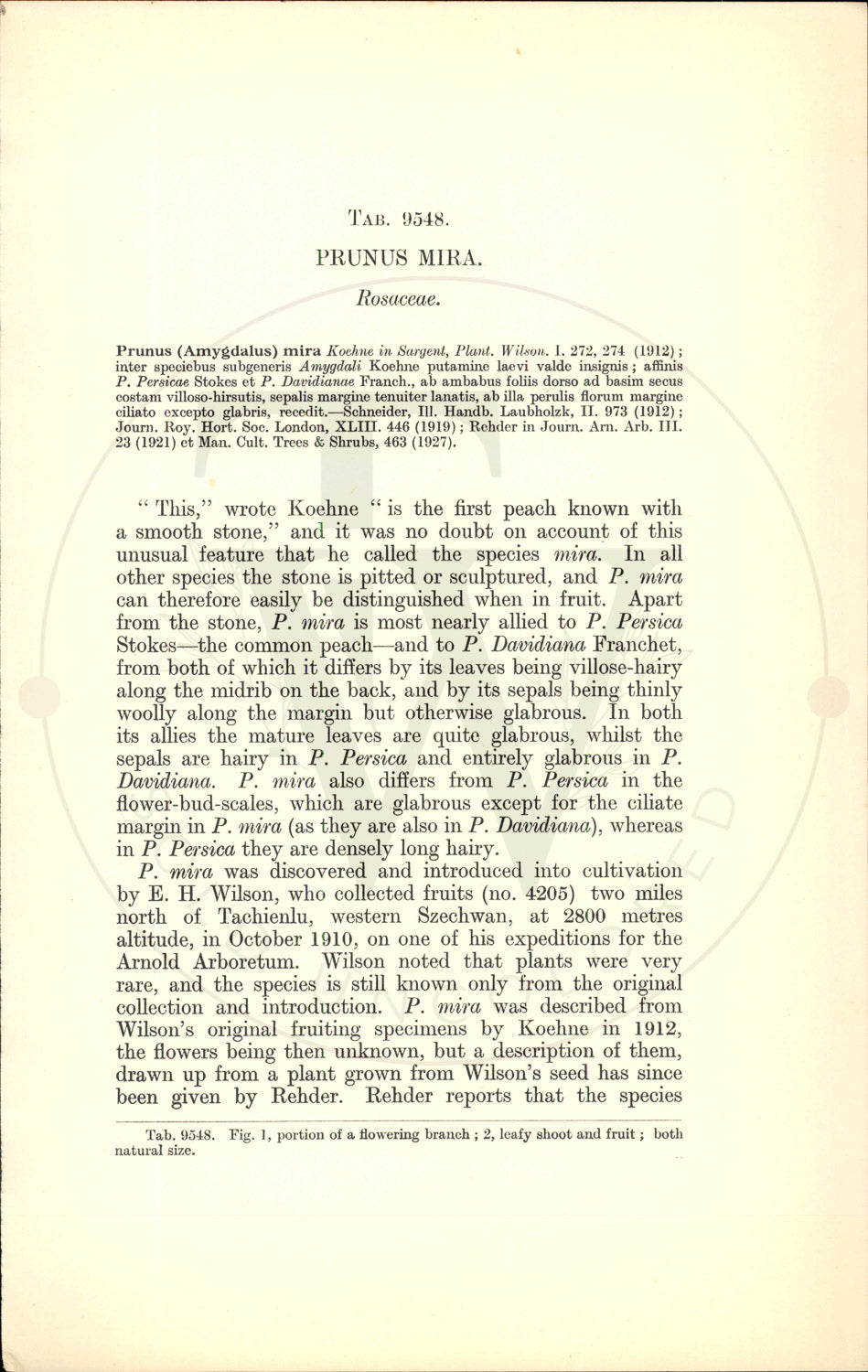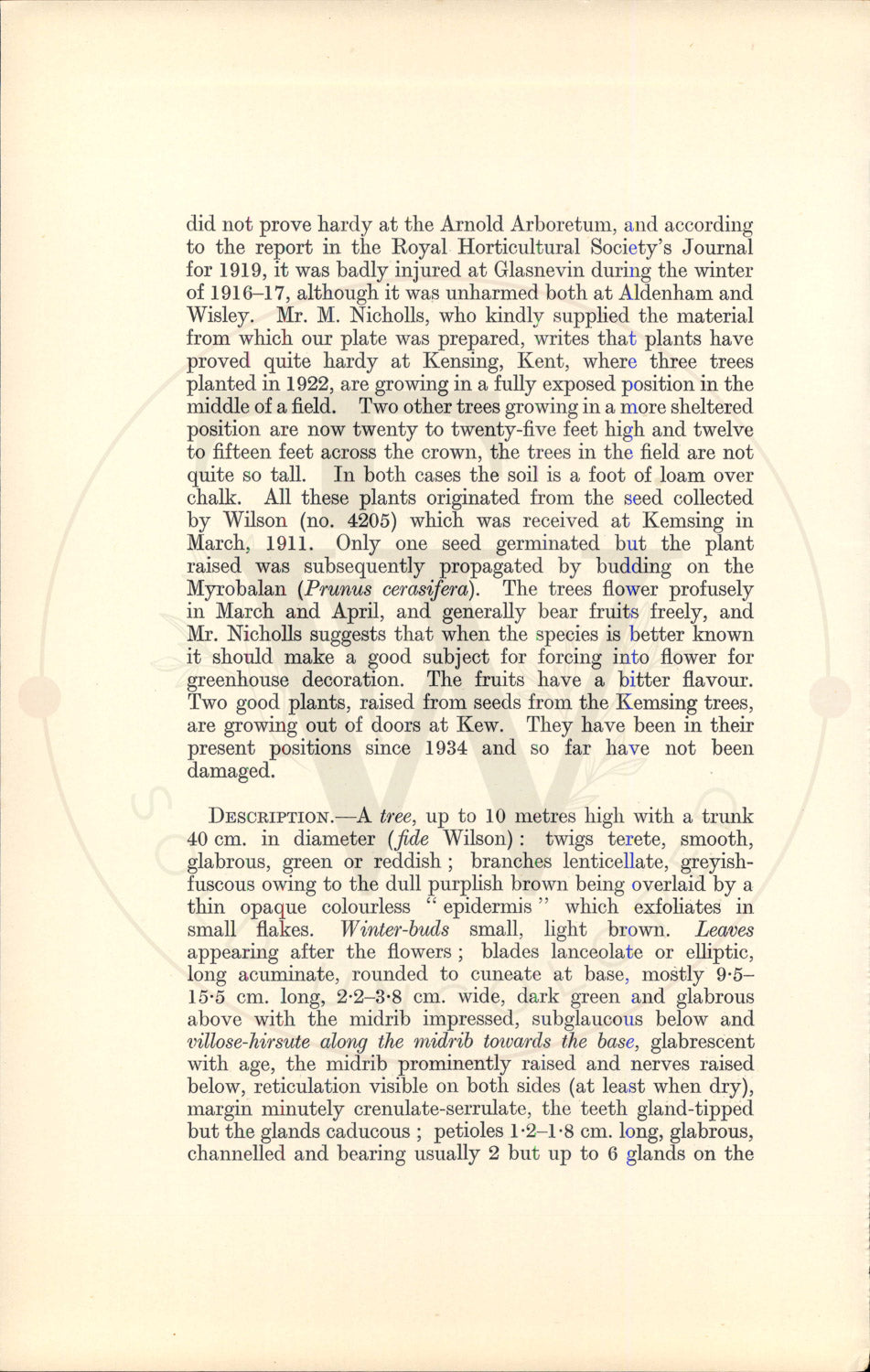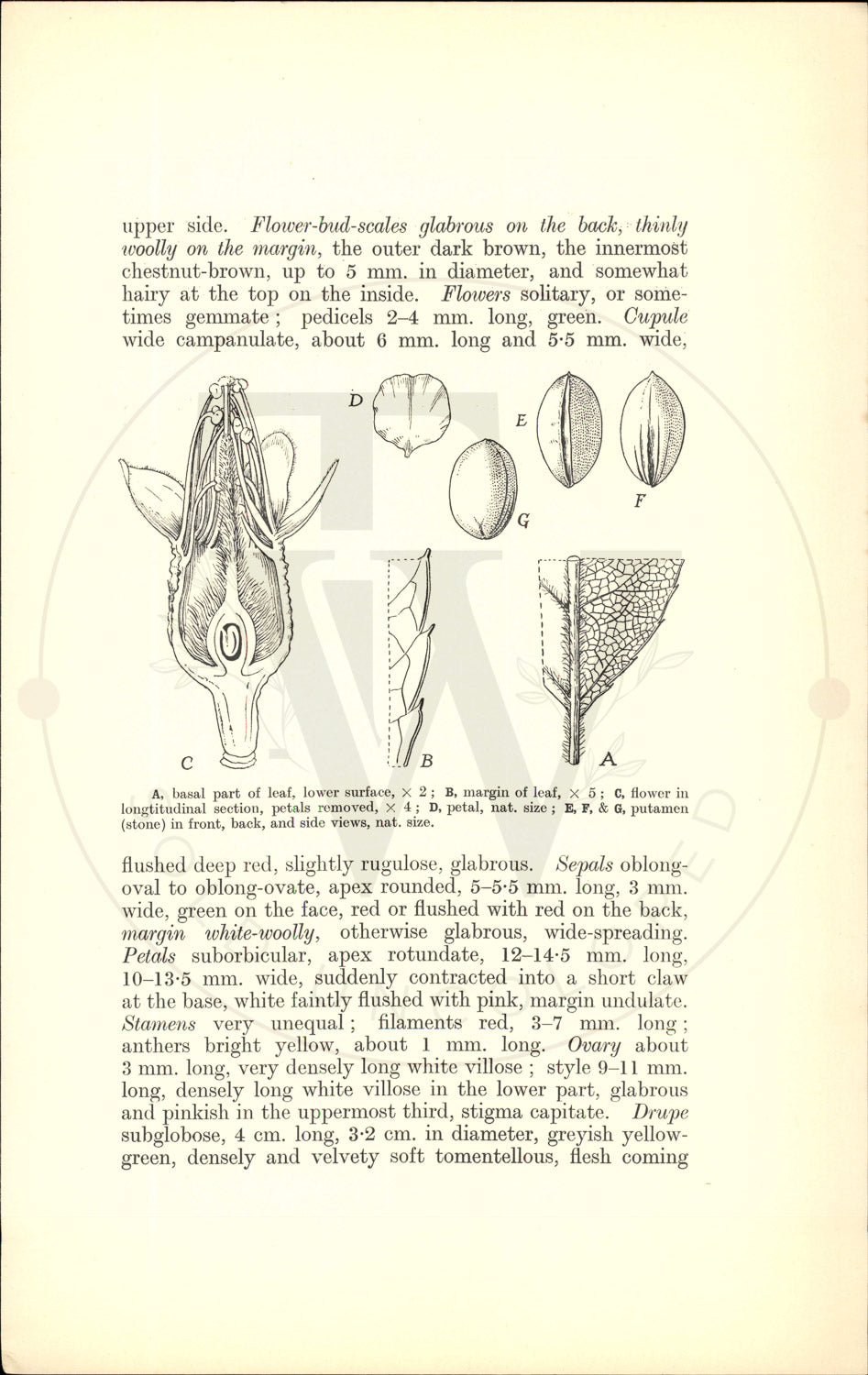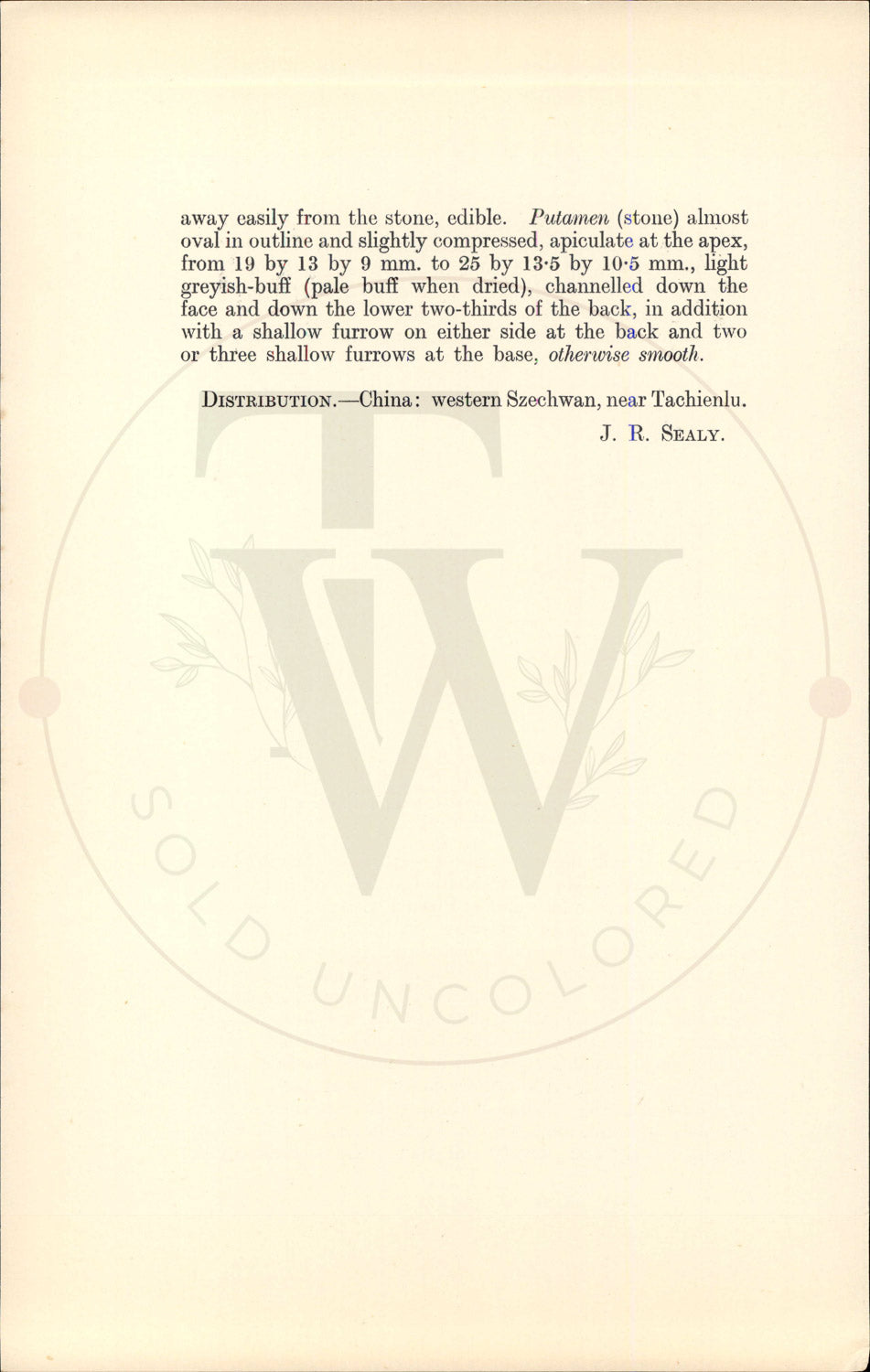Curtis Botanical Magazine
Plate 9548 - Prunus mira
Plate 9548 - Prunus mira
Couldn't load pickup availability
Curtis's Botanical Magazine - Plate 9548
Prunus mira
Family: Rosaceae • Native Region: China • Publication Date: January 1st, 1934
Distribution: -China: western Szechwan, near Tachienlu • Tab Author: J. R. SEALY
Botanical Description
Prunus (Amygdalus) mira Koehne in Sargent, Plant. Wilson. I. 272, 274 (1912); inter speciebus subgeneris Amygdali Koehne putamine laevi valde insignis; affinis P. Persicae Stokes et P. Davidianae Franch., ab ambabus foliis dorso ad basim secus costam villoso-hirsutis, sepalis margine tenuiter lanatis, ab illa perulis florum margine ciliato excepto glabris, recedit. -Schneider, Ill. Handb. Laubholzk, II. 973 (1912); Journ. Roy. Hort. Soc. London, XLIII. 446 (1919); Rehder in Journ. Arn. Arb. III. 23 (1921) et Man. Cult. Trees & Shrubs, 463 (1927). 66 This," wrote Koehne "is the first peach known with a smooth stone," and it was no doubt on account of this unusual feature that he called the species mira. In all other species the stone is pitted or sculptured, and P. mira can therefore easily be distinguished when in fruit. Apart from the stone, P. mira is most nearly allied to P. Persica Stokes the common peach-and to P. Davidiana Franchet, from both of which it differs by its leaves being villose-hairy along the midrib on the back, and by its sepals being thinly woolly along the margin but otherwise glabrous. In both its allies the mature leaves are quite glabrous, whilst the sepals are hairy in P. Persica and entirely glabrous in P. Davidiana. P. mira also differs from P. Persica in the flower-bud-scales, which are glabrous except for the ciliate margin in P. mira (as they are also in P. Davidiana), whereas in P. Persica they are densely long hairy. P. mira was discovered and introduced into cultivation by E. H. Wilson, who collected fruits (no. 4205) two miles north of Tachienlu, western Szechwan, at 2800 metres altitude, in October 1910, on one of his expeditions for the Arnold Arboretum. Wilson noted that plants were very rare, and the species is still known only from the original collection and introduction. P. mira was described from Wilson's original fruiting specimens by Koehne in 1912, the flowers being then unknown, but a description of them, drawn up from a plant grown from Wilson's seed has since been given by Rehder. Rehder reports that the species.
About This Print
Original black and white uncolored botanical print from Curtis's Botanical Magazine (established 1787). This 9000s series print is from unissued publisher stock, never hand-colored, representing the authentic plate as it appeared in the magazine. Edited by Sir Arthur William Hill for The Royal Horticultural Society, London.
Share
